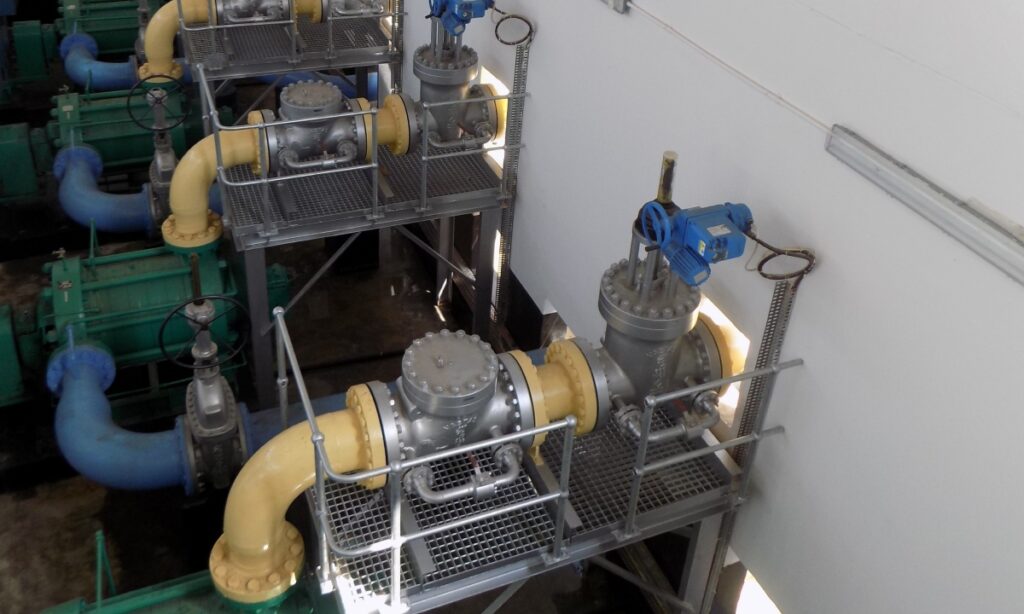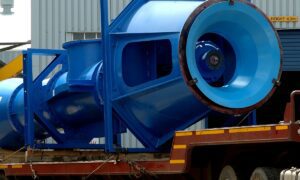APE Pumps and sister entity Mather+Platt have been designing, developing, manufacturing and refurbishing pumps for over seven decades – and many of these pumps are placed throughout the African continent.
We have always invested in our people first and foremost, which has paid major dividends for us over the years, resulting in the formation of long-term customer relationships and enabling us to progressively expand our footprint across South Africa, as well as further afield in Africa,” says John Montgomery, GM, APE Pumpsand Mather+Platt. He adds that most work done by the Group (APE Pumps and Mather+Platt) in Africa comes from mining companies or from projects funded by development finance institutions like the World Bank or European Investment Bank. “And in nearly all projects across South African borders, APE Pumps is contracted to provide the mechanical, electrical and civil components as an integrated turnkey solution.”
Turnkey solution
This is done through the APE Projects Division that manages and implements the design, installation and commissioning for variable-speed drives (VSDs), low- and medium-voltage switchgear, motors, transformers, valves, distribution boards, cabling, pipework and pipelines, as well as, of course, pumps. This division takes responsibility for mechanical, electrical and civil works, and is currently graded as an 8 ME contractor by the Construction Industry Development Board. APE’s pumps are only guaranteed if the project team completes the installation. “With every installation, we have specially trained people that check the vibration, alignment and condition of the pumps, and this is offered as a free service to our clients,” states Montgomery. “What customers especially enjoy about our service is that they can walk through the design, manufacturing and commissioning process with us,” he continues. “This also includes training for the client’s technical personnel.” As an accredited MERSETA trainer, APE Pumps prepares apprentices for qualifications as boilermakers, fitters and turners, as well as pattern-and mould makers.

Patternmakers and quality
The Group is not dependent on imports from overseas territories. Every component needed is made in South Africa. This creates quicker turnaround times for delivery and better customer service. Whatever the age or date of installation, APE has the ability to design, fabricate and retrofit. “A major distinction is that we are an OEM and have one of the few pattern shops left in Africa, where our specialist artisans produce wooden patterns in the age-old tradition, alongside the latest trends in 3D printing. Our unsurpassed skill in patternmaking enables us to produce specialised patterns for our components on a breakdown basis,” explains Montgomery. When pumps are cast at the foundry, the precise tolerances that need to be achieved can be as exact as 1/1 000 mm but, before this process, work first begins in the pattern shop. This is where the casting models are handmade to technical specifications. In most instances, they are crafted in wood. Metal castings are still common, but more suited to mass production applications, whereas the wooden versions are intended for lower product volumes and unique, custom-built requirements. A key factor that defines the Group’s commitment to the industries it serves is that a blueprint exists for every pump model it has manufactured. “That includes legacy products we inherited as a Group prior to our formation in 1952. A classic example is an approximately 100-year-old pump – imported from the UK – that we remanufactured for Rand Water based on the original drawings,” Montgomery explains, adding that Mather+Platt’s original lineage can be traced back to Great Britain’s First Industrial Revolution in the late 18th century.By using a 3D scanner, the Group also has the capabilities to replicate any pump where the original OEM is no longer trading, even where the drawings no longer exist. APE has the capability to supply products from start to finish (all in-house) – from design phase, to the patterns, fabrication, machining, assembly, installation, commissioning and alignments.
The company recently scanned an entire pump station, where the model of the pump that was to be installed was attached to the 3D scanner. This put the pump in a virtual world and allowed APE to make sure the flanges were matching and fit perfectly into the casing. The scanner also helped to plan how the pump would be installed. It is valued by clients who do not have up-to-date plans of their pump stations. All processes are ISO 9001 accredited to ensure strict adherence to quality. “High-pressure environments like bulk water transfer depend on exact tolerances and there’s no margin for error,” adds Montgomery.
Service level agreements
There are service level agreements (SLAs) in place between APE Pumps and most of its clients in Africa. This essentially means that APE Pumps and Mather+Platt are contracted to service and support their installed systems. “Operation and maintenance type work has definitely been a growing area in the past decade, and we see this trend continuing, especially in other African countries,” explains Montgomery. “We have some SLAs where we will maintain and bring an APE pump back to its OEM specification at 60% of the pump’s current cost. There are some SLAs where APE keeps stock of brand-new units for a client so that we can implement a service exchange. The client will provide APE with an old pump to bring to OEM specifications and APE will give the client the new pump. Many companies are no longer keeping critical spares in stock, so we do this for them,” he continues. The Group conducts manufacturer-warranted repairs, and supplies new OEM pumps and valves. Whether it’s an off-the-shelf product, an OEM custom design or a retrofit, all work comes with a warranty. When fitted with telematics, APE Pumps can monitor and control pump health and performance remotely, further improving service levels in Africa. “Bearing temperatures, output, vibrations and energy consumption are a few of the parameters that we monitor. This allows APE to identify any pump issues in advance, make sure the pump is operating on the right curve and conduct more preventative maintenance. Many of the SLAs includes the training of a client’s staff. We always encourage our clients to visit our premises and learn how pumps are maintained, stripped and serviced. “If well maintained, APE and Mather+Platt’s pumps will last a lifetime – across Africa, there are hundreds of working examples.APE Pumps has never discontinued a pump model since inception in 1952, so parts are always available,” Montgomery concludes.








